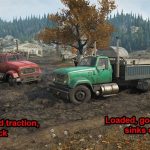
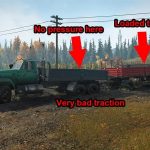
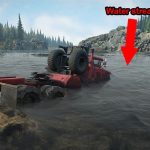
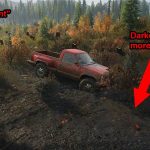
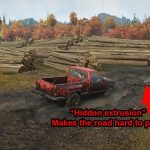
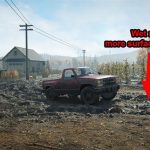
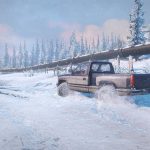
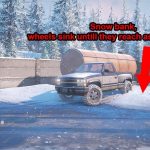

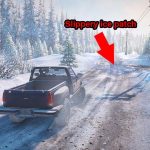
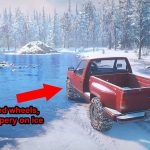
Terrain Physics – SnowRunner
Let’s talk about terrain.
SnowRunner has evolved considerably in every department since MudRunner, and when it comes to terrain physics and its behaviour in relation to vehicles, our goal is to be at the top of the industry. To illustrate our efforts in this department, we’re excited to share the details of how we’ve both expanded and deepened the terrain physics in SnowRunner.
Driving in mud
In SnowRunner, there are extrudable surfaces (grass, dirt, sand, etc.) and non-extrudable surfaces (asphalt, concrete, rock, etc.). Extrudable surfaces all have a different base viscosity, meaning that you’re more likely to get stuck when driving on sand compared to driving on grass, for example.
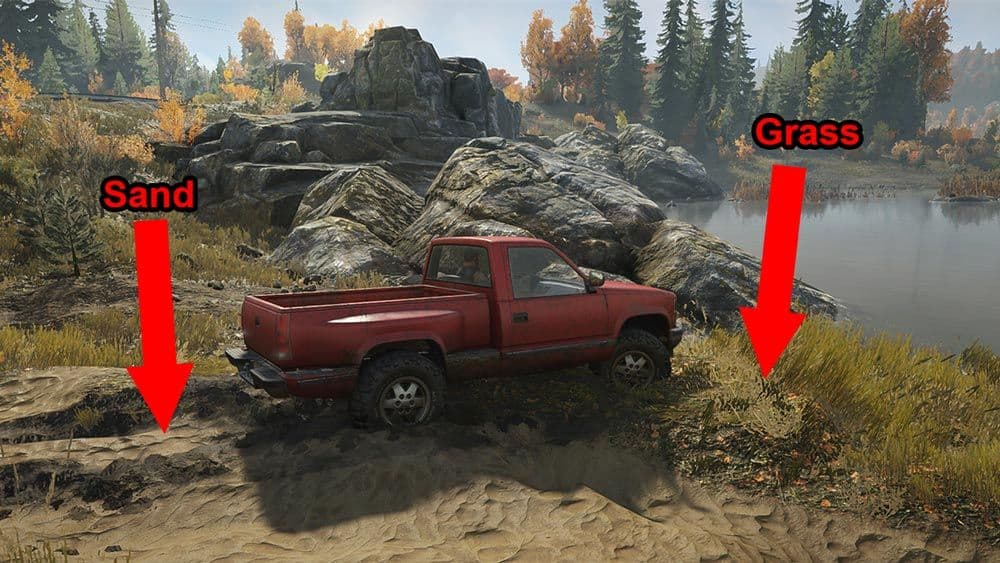
Note: this is new to SnowRunner; in MudRunner all surfaces had the same base viscosity.
Additionally, viscosity is higher where ground looks darker (has a dark tint). In MudRunner, tint had two colors (brown for grassy surfaces and greenish for others). In Snowrunner, tint is painted with a colored brush, but the idea is the same (darker = more viscosity and a higher chance to get stuck).
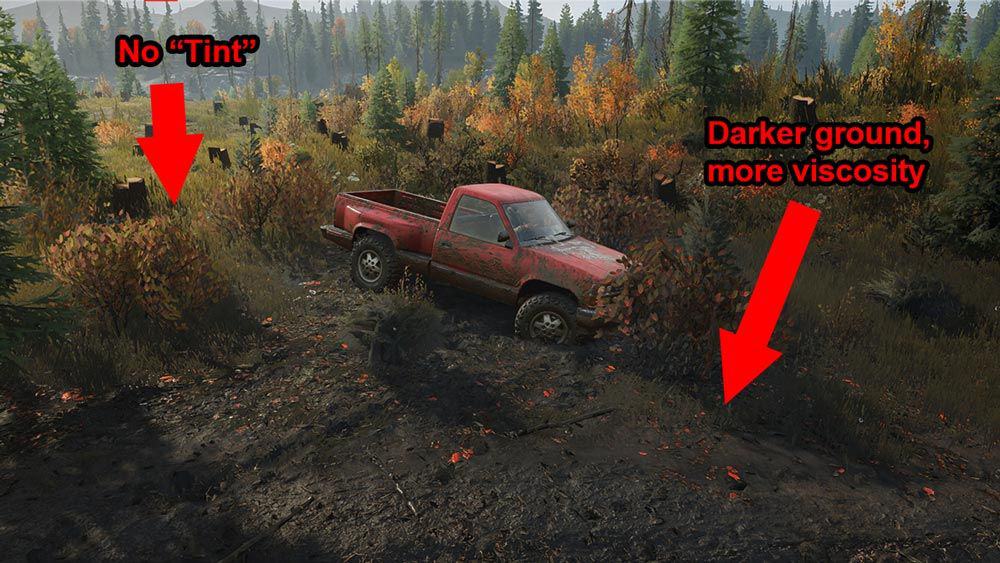
Another thing that changes the way vehicles dig into terrain is so-called “extrusion data”. You can’t see it in the game, but map creators can paint it with a special brush. It’s often used to make swamps, mud roads, or other hard-to-pass routes actually difficult to traverse.
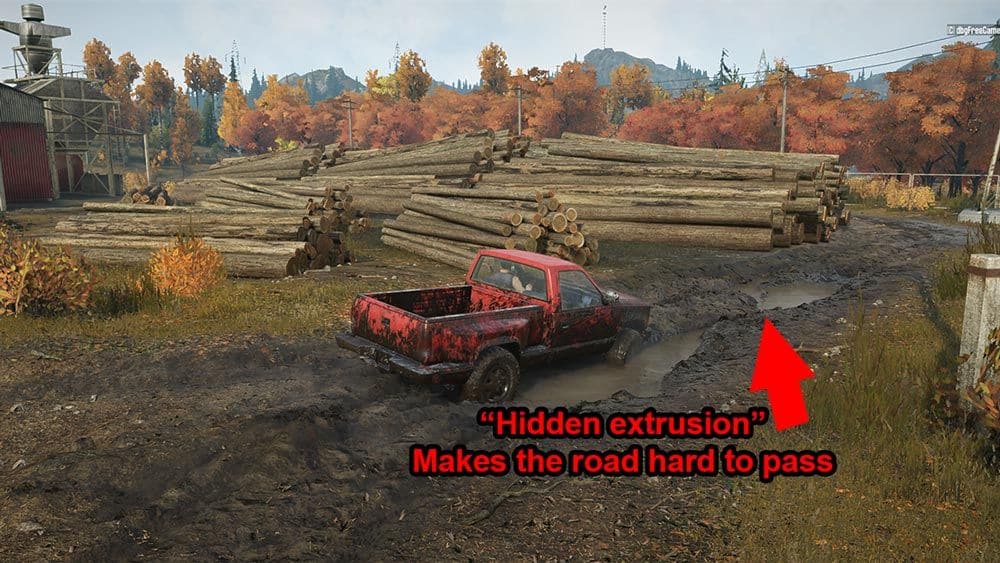
Note: SnowRunner improves on MudRunner in that those “hidden extrusions” can’t be too deep for certain ground types (i.e. grass that looks dry and solid), making driving more predictable.
But what is fundamentally new in Snowrunner, is the “wetness mask”. The map author paints it with a special brush, making ground look wet where it should (in MudRunner the ground looked dry everywhere).
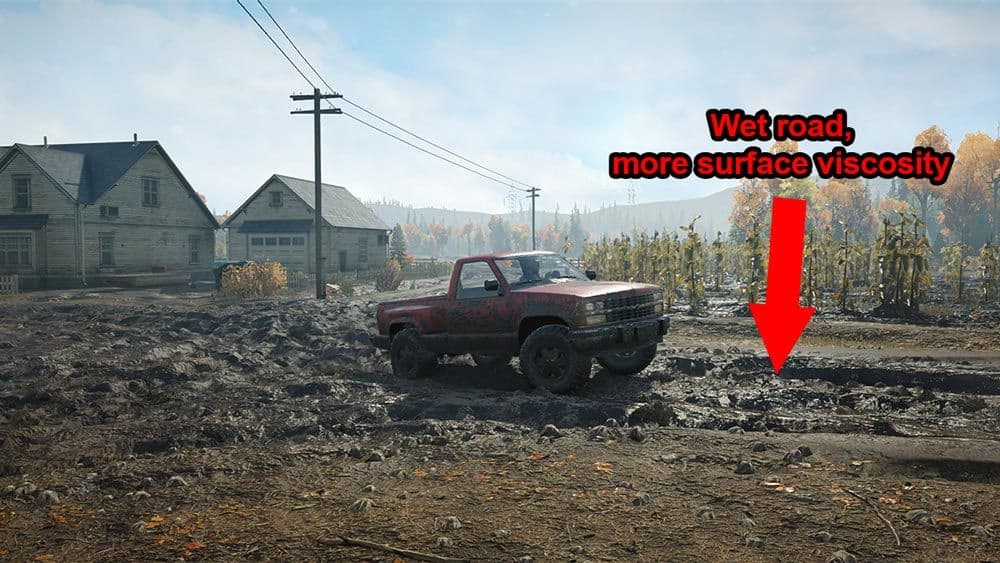
The wetness mask affects viscosity in the same way tint does, so you are more likely to get stuck on wet surfaces.
Driving in snow
Snowy surfaces can have different snow depth. You can’t see it in the game (snow depth is painted in the map editor with a special brush), but vehicles behave differently depending on the depth of the snow it’s driving over.
When snow depth is zero, you will see your wheels digging into the mud. When driving in deep snow however, you will see snow chunks flying from under your wheels, and your vehicle will behave differently. This means that the vehicle will sink into the snow until it reaches the ground below.
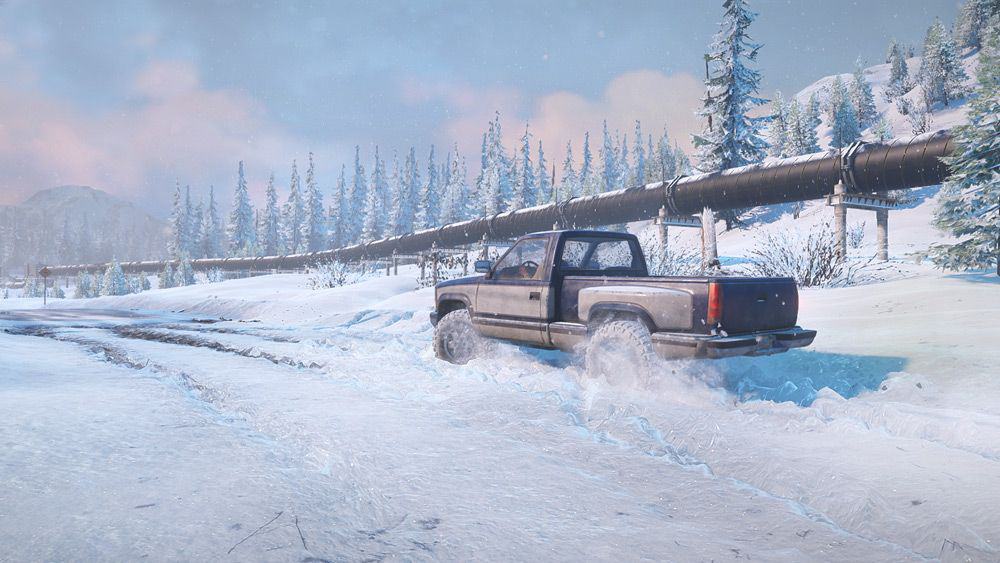
Note: Off-road tires improve vehicle off-road capabilities for both snow and mud environments.
If the ground below the snow is non-extrudable (i.e. snow bank on asphalt), the vehicle will sink no further.
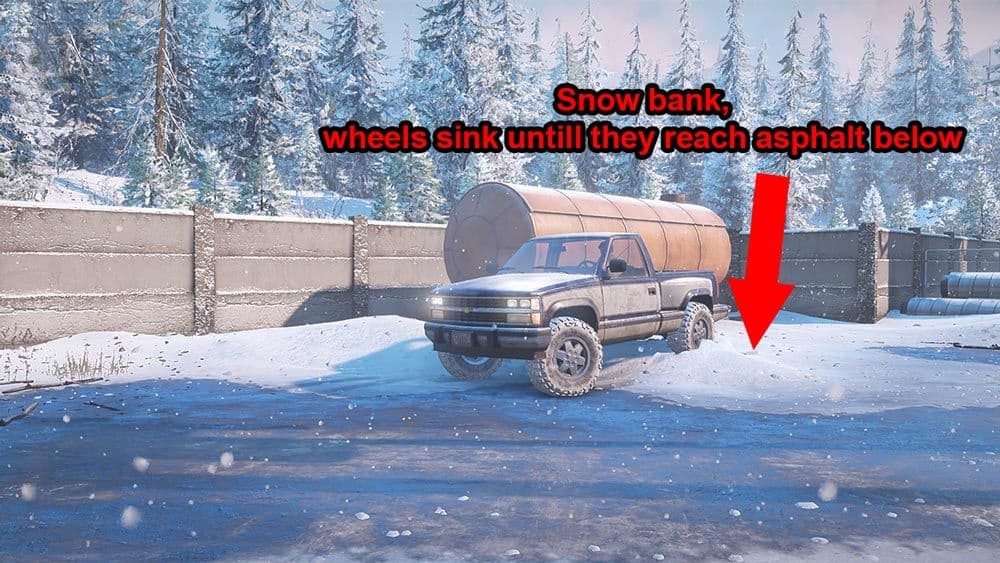
Additionally, deep snow always behaves like a surface with high viscosity, so snow that looks “darker” (has dark “tint”) isn’t more difficult to traverse, unlike mud.
Note: There is no “wet” snow, as the wetness mask is ignored for snowy surfaces.
On winter levels, non-extrudable surfaces painted over with the wetness mark acts as ice. Vehicles will slide naturally on ice, unless special wheels are installed.
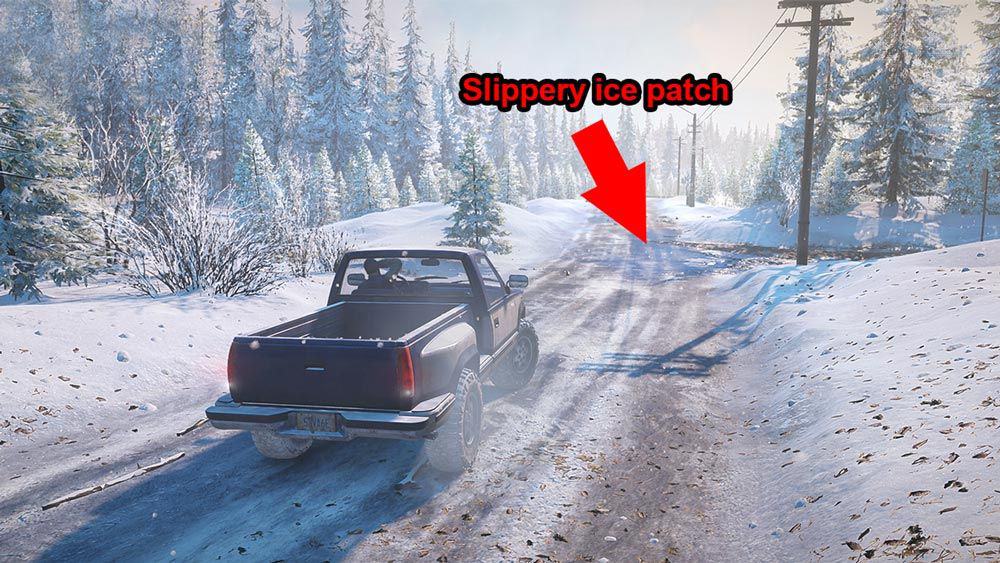
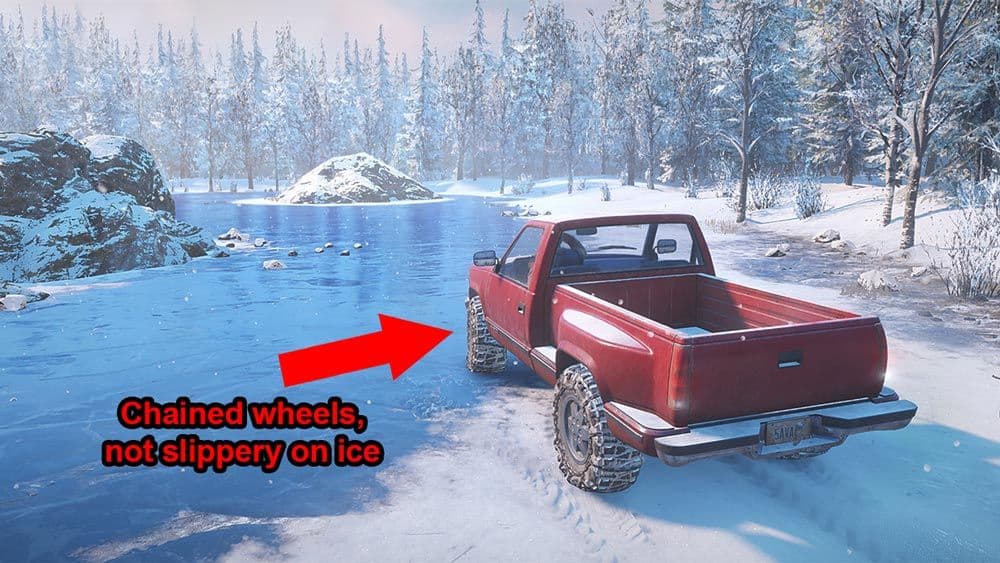
For both and snow and mud environments, there is always a trade-off between vehicle mass and its off-road behaviour. Loaded vehicles will sink deeper, but the wheels have better traction with the ground.
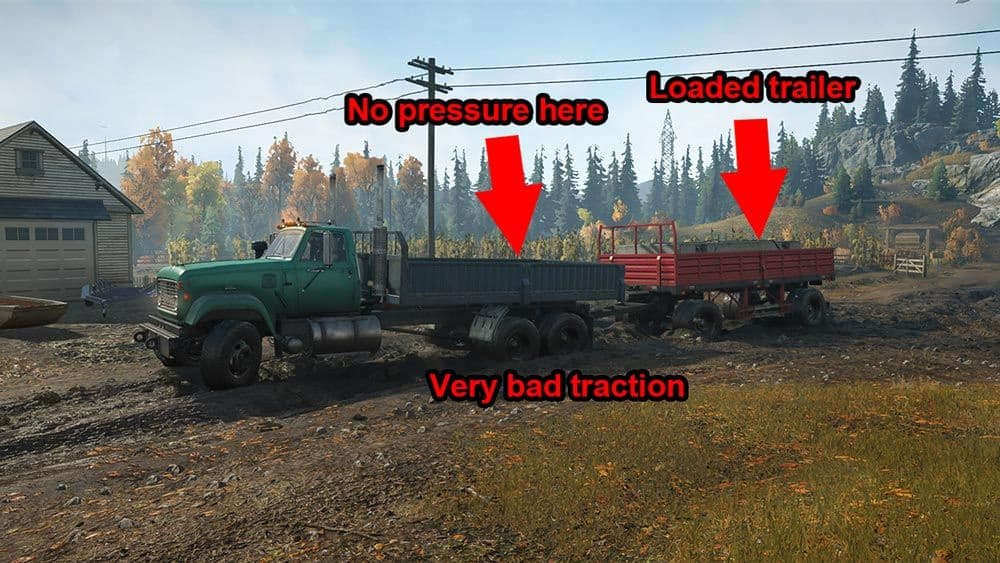
… but only if the mass is distributed properly!
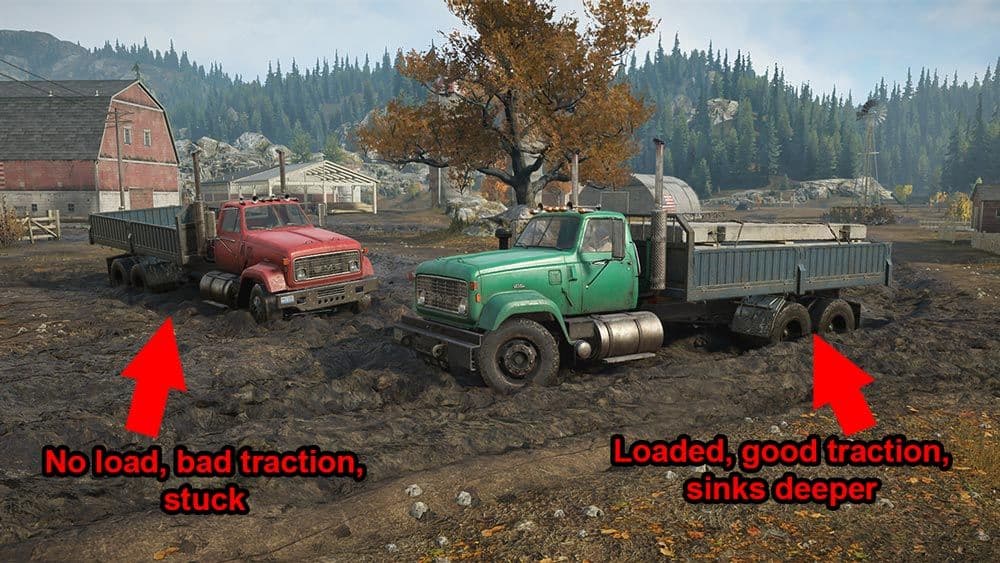
Driving in Water
Water in Snowrunner, as in Mudrunner, can flow at different speeds. When crossing a river, natural rules apply – heavy vehicles are less affected by the current and lighter vehicles are more prone to floating and capsizing.
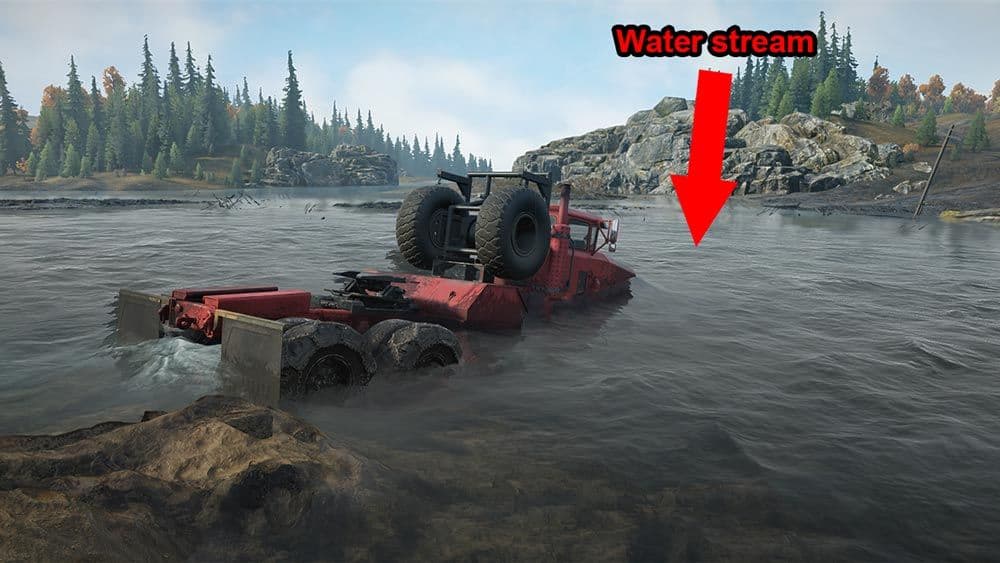
New in Snowrunner is that vehicles can be equipped with different snorkels that change the maximum water depth that a vehicle can traverse before taking damage.
Thank you all for reading our blog on terrain physics, we hope you’ve enjoyed it! We can’t wait for you to discover and explore the varied environments of SnowRunner with our huge roster of vehicles.
See you in the snow!
Pavel Zagrebelniy – Original Game Creator




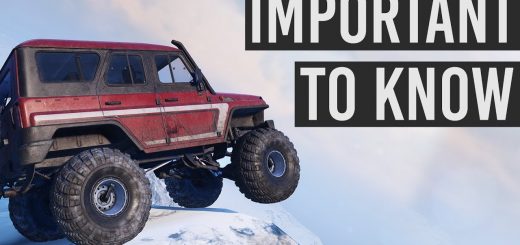
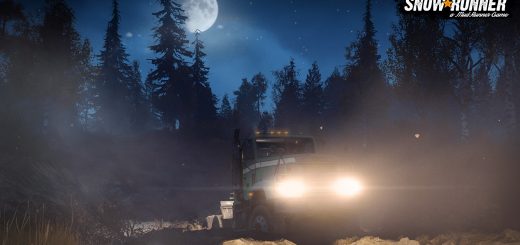

oh my god sonwrunner the best off road game <3